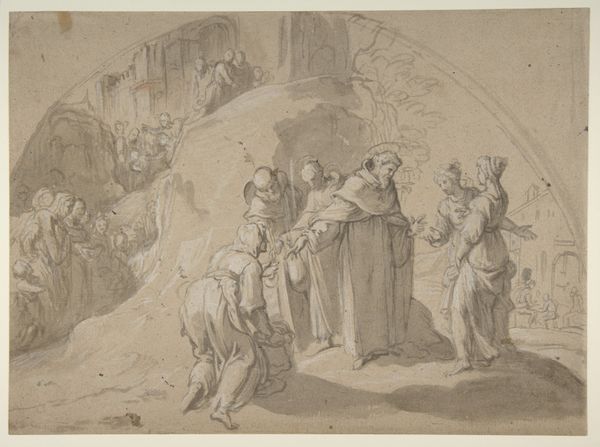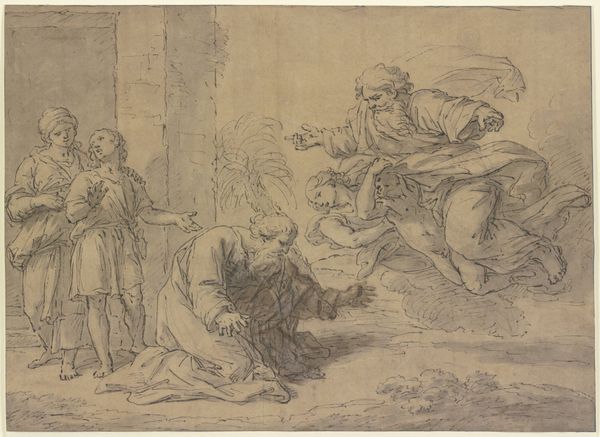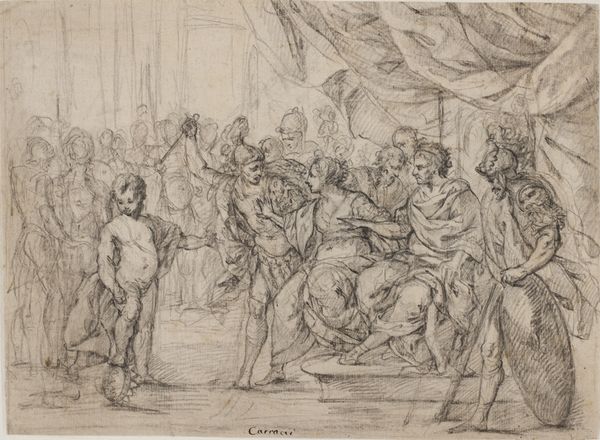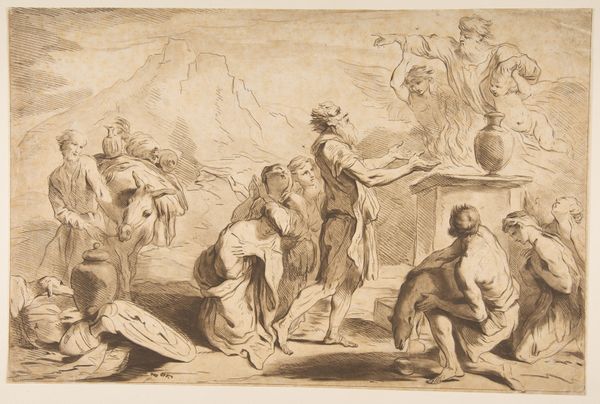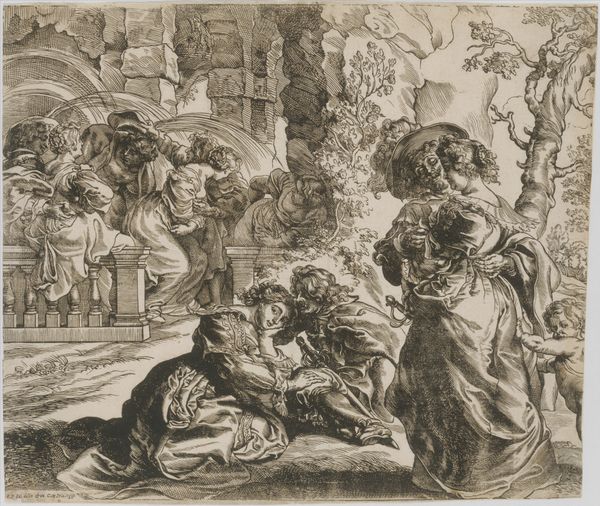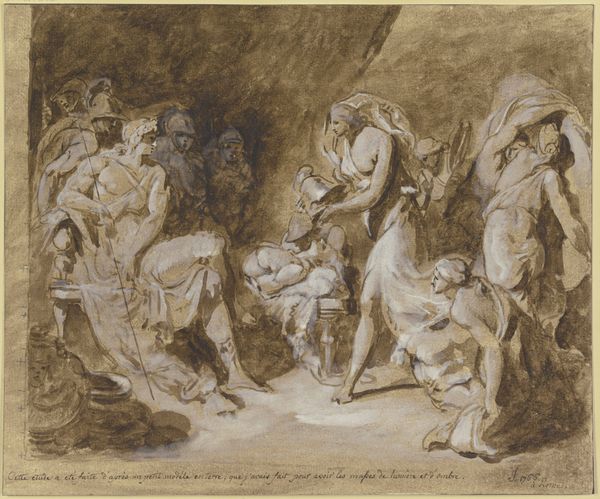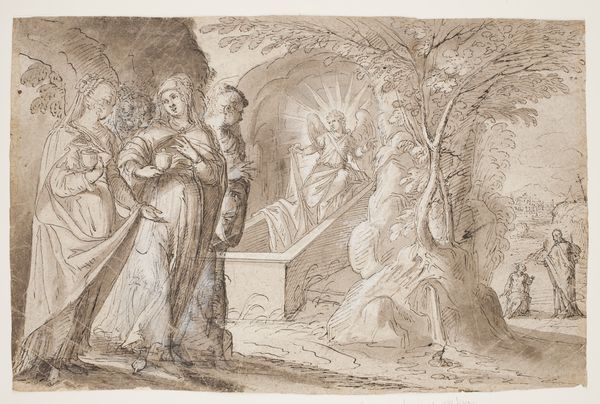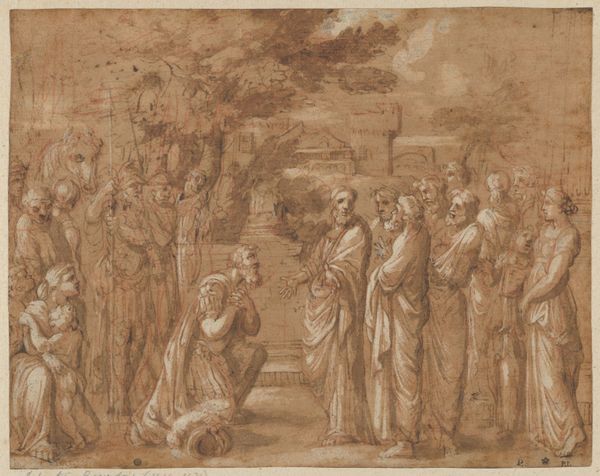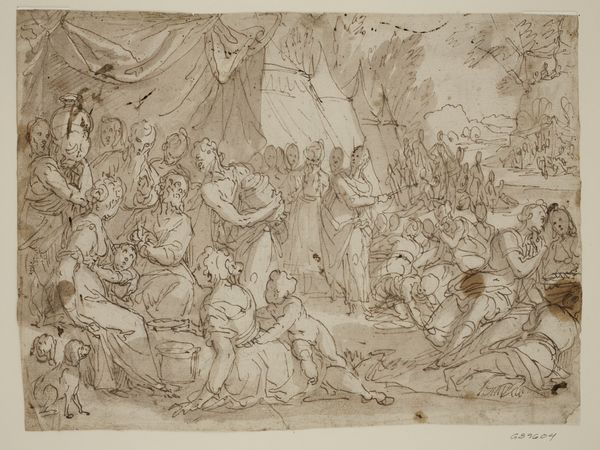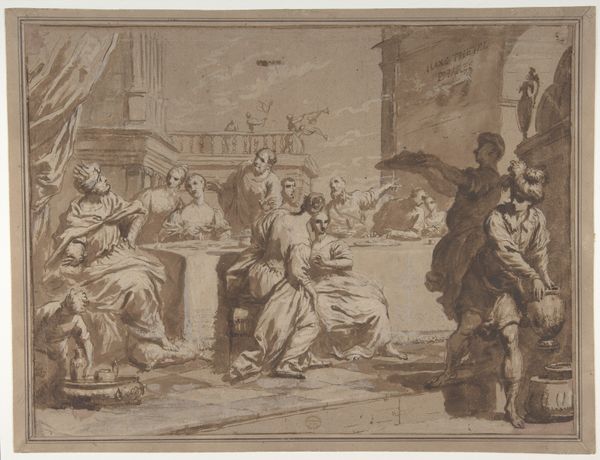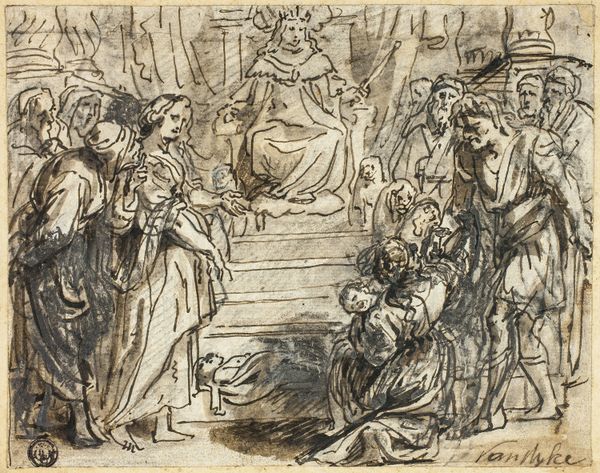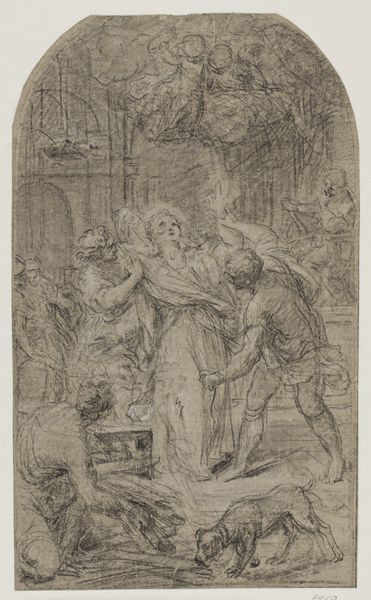
drawing, paper, ink, charcoal
#
drawing
#
narrative-art
#
baroque
#
ink painting
#
charcoal drawing
#
figuration
#
paper
#
ink
#
genre-painting
#
charcoal
#
history-painting
#
academic-art
Dimensions: 9 1/8 x 12 7/8 in. (23.2 x 32.7 cm)
Copyright: Public Domain
Curator: We are looking at "The Judgment of Solomon," a drawing from circa 1649-1650, crafted by Constantijn Daniel van Renesse. It employs ink and charcoal on paper. Editor: My first impression? Claustrophobia. A stage filled with figures, a drama about to explode. The muted tones heighten the tension—it feels like holding your breath. Curator: The scene depicts the famous biblical story where King Solomon must determine which of two women is the true mother of a baby. Both claim the child as their own. Editor: Right, Solomon, the cleverest of them all. It’s like Renesse captured that crucial moment, that agonizing pause before Solomon drops the bombshell of his seemingly barbaric suggestion: to cut the baby in half. The horror of the true mother about to be revealed by her protest. Curator: And it is that horror that carries significant weight. Throughout history, the judgment of Solomon represents divine wisdom, the epitome of righteous jurisprudence. The drawing captures not just the external scene, but also that internal, emotional conflict. Observe the executioner, ready to bring his sword, how Renesse created movement through those swift and confident strokes, to capture a moment where action seems immediate, yet it's a setup for something that's more powerful through an emotive stance of motherhood. Editor: Definitely. The figures feel very imposing, almost theatrical. Even in monochromatic scheme, there's a depth to the work. Look how the artist masterfully uses shading to shape these characters in our mind’s eye, accentuating their reactions to Solomon's shocking test. It's more than just telling the story. It is all those hidden things revealed, just when about to lose everything. The agony, but hope, perhaps? Curator: Exactly, and this relates directly to its cultural staying power. Justice and mercy intertwined, tested by the extremes of human emotion and motherly love, all represented by visual, readable clues. The throne itself acts as this barrier for logic and moral, so to see her come down in despair it brings forth more weight, rather than a mere narrative moment. It becomes a symbol of hope when faced against all odds. Editor: Well said. Seeing Renesse’s piece certainly makes one think about the timeless quality of these narratives, about the ways certain themes resonate, and why the question about “justice” versus “mercy” still stays relevant across time.
Comments
No comments
Be the first to comment and join the conversation on the ultimate creative platform.
